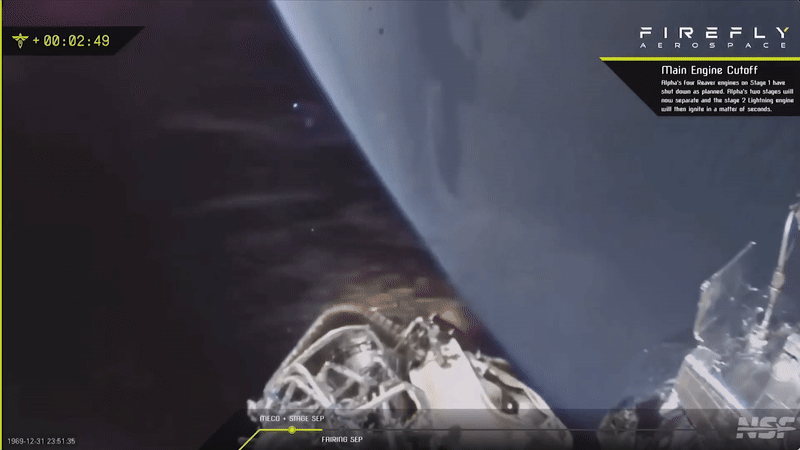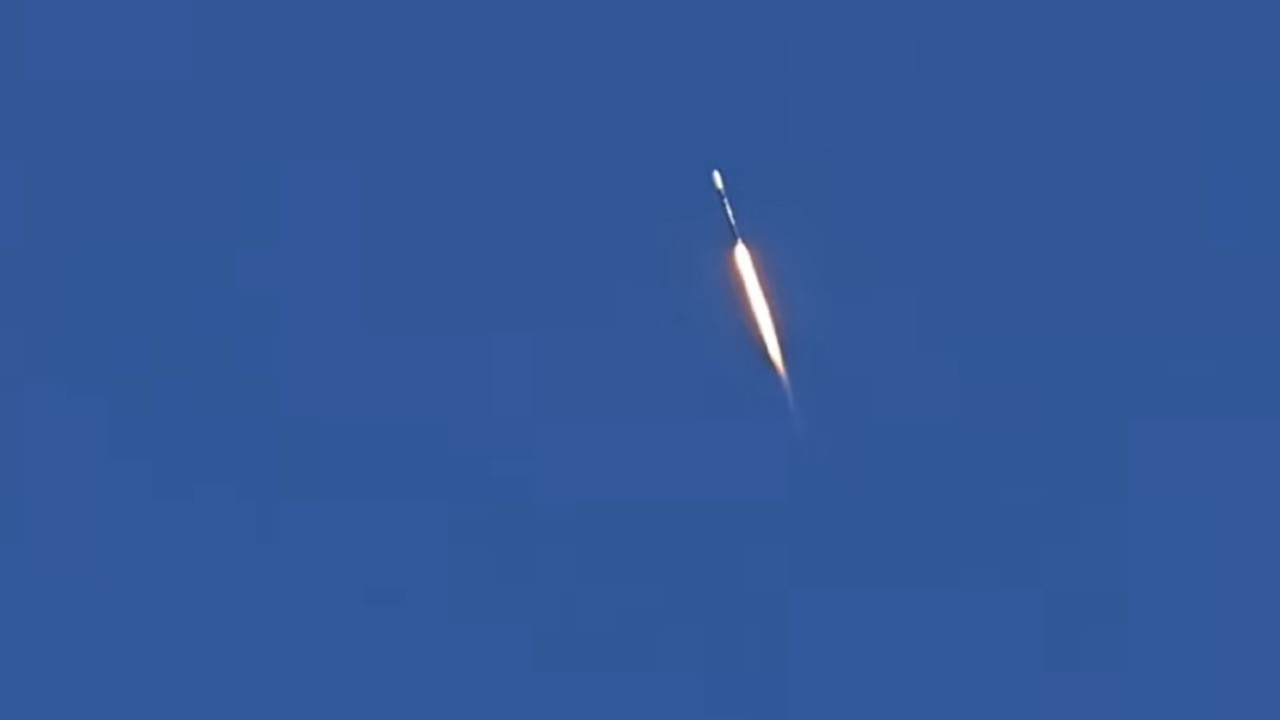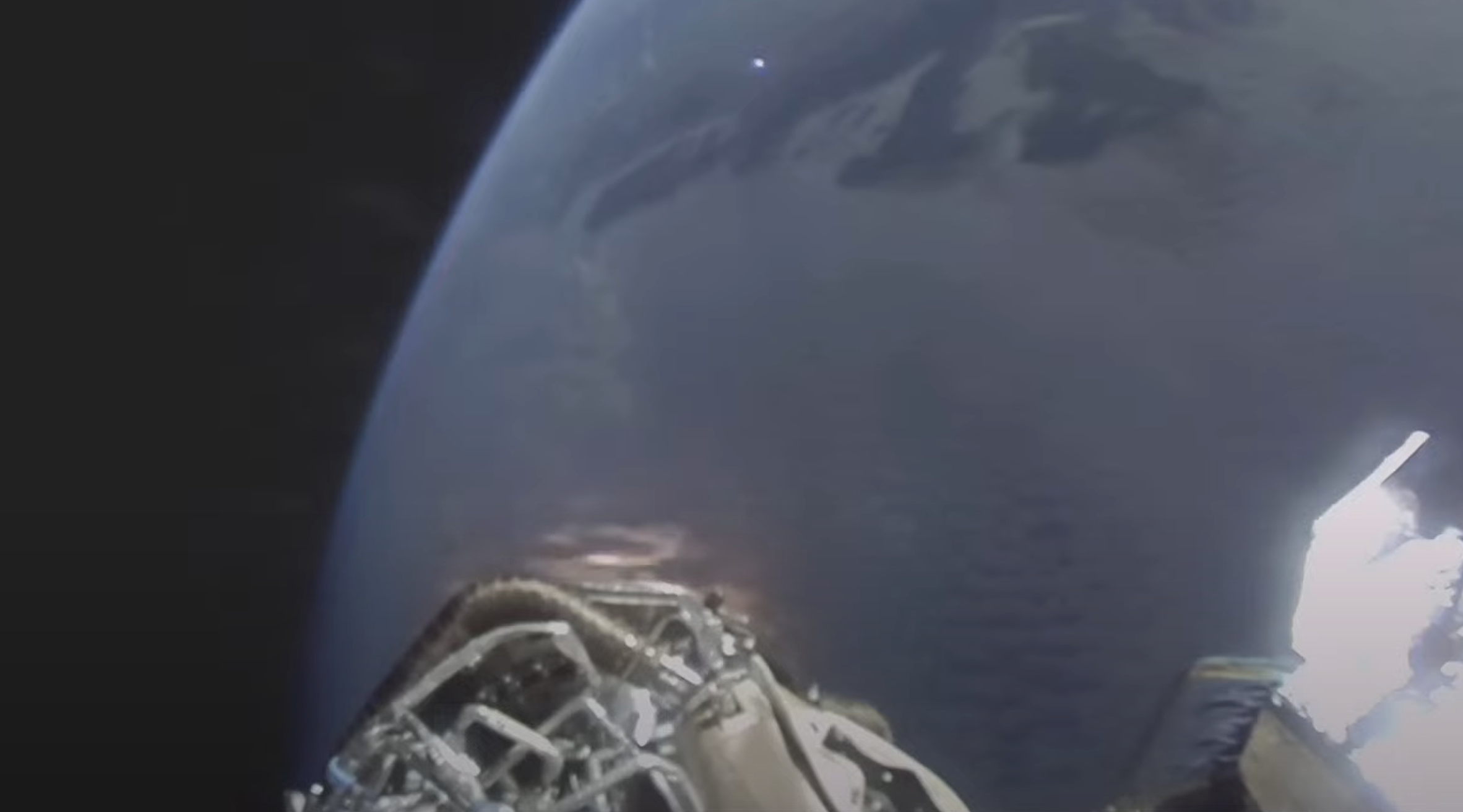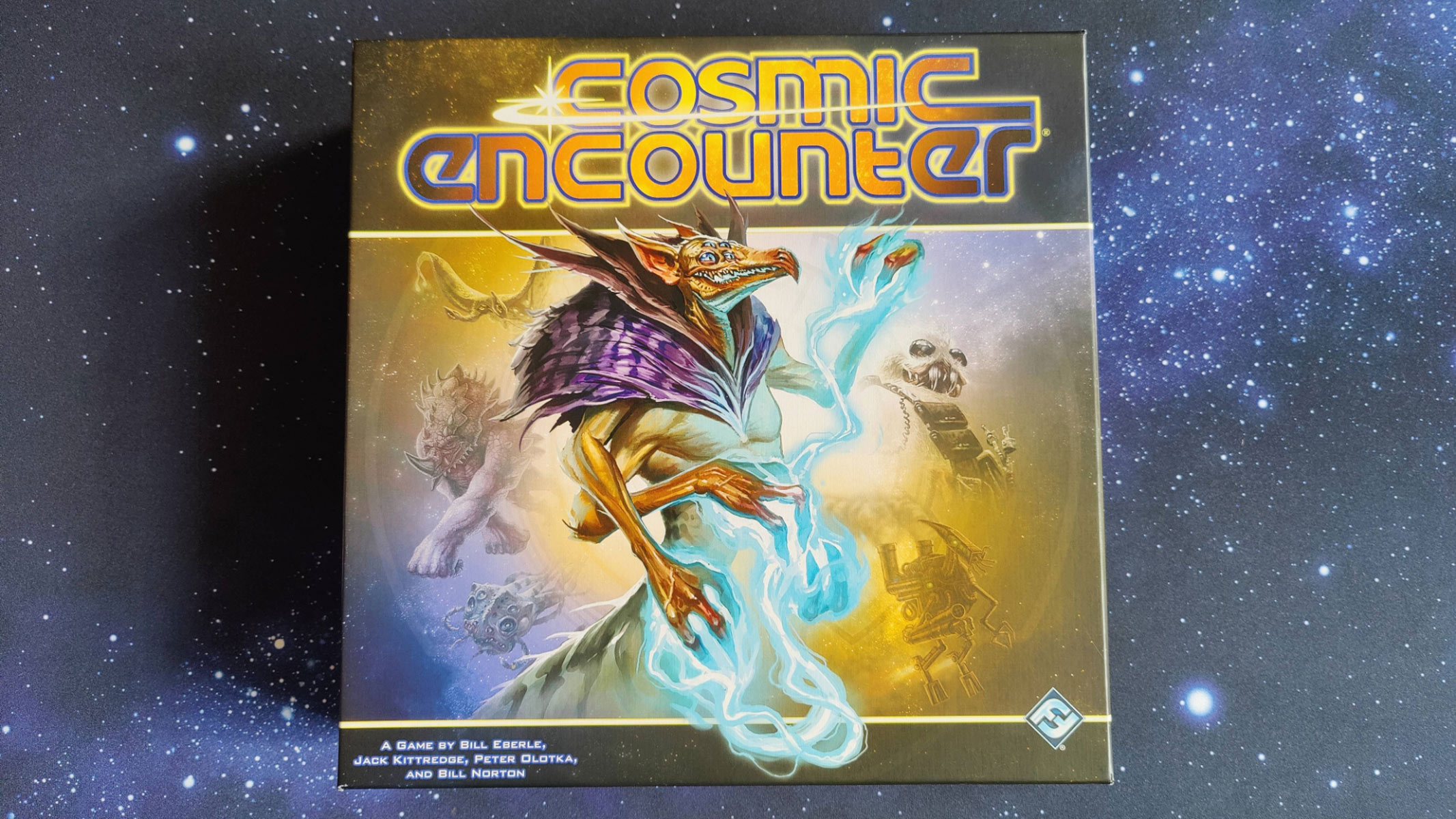Firefly Aerospace launched its Alpha rocket for the sixth time ever on Tuesday morning (April 29), but things did not go as planned.
Alpha lifted off from California's Vandenberg Space Force Base Tuesday at 9:37 a.m. EDT (1337 GMT; 6:37 a.m. local California time) through dense fog. The rocket's second stage appeared to tumble after separating from its booster, but seemed to right itself shortly afterward. However, it appears the second-stage vehicle may have lost its nozzle.
"Following a nominal liftoff of Firefly’s Alpha rocket, there was a mishap during first stage separation for the FLTA006 mission that impacted the Stage 2 Lightning engine nozzle, putting the vehicle in a lower than planned orbit," Firefly Aerospace wrote in an update on X following the launch. "We are working with our Lockheed Martin customer, the Space Force, and FAA to conduct a thorough investigation and determine the root cause."

Today's mission, which Firefly called "Message in a Booster," was intended to send the LM 400 satellite technology demonstrator to low Earth orbit (LEO) for Lockheed Martin.
The mission was originally supposed to launch on March 15, but Firefly called that attempt off due to an issue with the launch range. Another attempt on Monday (April 28) was scrubbed due to an issue with ground support equipment.
Today's flight was the first of up to 25 launches that Firefly will conduct for the aerospace giant over the next five years under an agreement announced last year.
"The LM 400 tech demo was specifically built to showcase the company's pathfinding efforts for its LM 400 mid-sized, multi-mission satellite bus, and to demonstrate the space vehicle's operational capabilities on orbit for potential customers," Firefly wrote in a prelaunch mission description.
Get the Space.com Newsletter
Breaking space news, the latest updates on rocket launches, skywatching events and more!
"As a platform, Lockheed Martin's LM 400 is the company's most flexible satellite bus, capable of serving military, commercial or civil customers," Firefly added. "It can be customized to host a variety of missions — including remote sensing, communications, imaging and radar — and operate in any orbit."

"Message in a Booster" was the sixth flight for the two-stage, 96.7-foot-tall (29.6 meters) Alpha, which is capable of sending 2,270 pounds (1,030 kilograms) of payload to LEO.
The rocket suffered a partial failure during its fourth flight in December 2023, deploying its payload — an electronically steerable antenna developed by Lockheed Martin — into the wrong orbit. But Alpha bounced back on Flight 5 last June, sending eight cubesats to LEO as planned.
Related: New record! Firefly Aerospace launches Space Force mission 27 hours after receiving order

Firefly has been in the news quite a bit recently, and not because of Alpha: On March 2, the company's Blue Ghost moon lander pulled off the second-ever soft lunar touchdown by a private vehicle.
Blue Ghost and its 10 NASA science instruments performed well, operating until mid-March, when the sun set over the solar-powered lander's touchdown site in the northern hemisphere of the moon's near side.
Editor's note: This story was updated at 1:15 p.m. ET on April 25 with the new target launch date of April 27, then again at 8:45 a.m. ET on April 27 with the new target of April 28. It was updated again at 2:45 a.m. ET on April 29 with the new launch target of April 29, then again at 11:15 a.m. ET on April 29 with news of launch and the anomaly.
Join our Space Forums to keep talking space on the latest missions, night sky and more! And if you have a news tip, correction or comment, let us know at: community@space.com.

Michael Wall is a Senior Space Writer with Space.com and joined the team in 2010. He primarily covers exoplanets, spaceflight and military space, but has been known to dabble in the space art beat. His book about the search for alien life, "Out There," was published on Nov. 13, 2018. Before becoming a science writer, Michael worked as a herpetologist and wildlife biologist. He has a Ph.D. in evolutionary biology from the University of Sydney, Australia, a bachelor's degree from the University of Arizona, and a graduate certificate in science writing from the University of California, Santa Cruz. To find out what his latest project is, you can follow Michael on Twitter.
You must confirm your public display name before commenting
Please logout and then login again, you will then be prompted to enter your display name.
